I discovered toward the second half of August, that the Edinburgh Book Festival was online this year, and completely free. It was an exciting discovery. I’ve always wanted to attend the festival in person, but the travel and expense made it difficult for me to do so.
I wasn’t able to attend everything the festival had to offer (although it was online, they still had a huge number of offerings—over 140!). So, I decided to focus on the events that were of the most interest to me. These were primarily discussions of historical and magical realist novels and issues within the writing community.
In all, I was able to attend seven events, most of which I enjoyed. These were: Shokoofeh Azar: After the Iranian Revolution, Maaza Mengiste: When Italy Invaded Ethiopia, Alexander McCall Smith in conversation with Ruth Davidson: For the Love of Humankind, Ross Benjamin & Daniel Kehlmann: When History Prefigures Our Own Times, Who’s Afraid of the Working Class? A panel discussion, Elif Shafak: Writing the World’s Wrongs and finally Matt Haig: The Library of Second Chances.
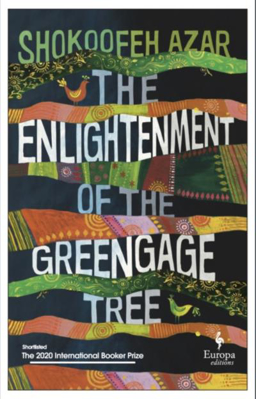
Shokoofeh Azar: After the Iranian Revolution
Shokoofeh Azar was in conversation with Marjorie Lotfi Gill about her novel The Enlightenment of the Greengage Tree. Her novel was translated from the original Farsi, but the translator does not wish to be named due to fears for their safety (Azar herself was granted asylum in Australia in 2011).
Azar gave a moving account of The Enlightenment of the Greengage Tree, which blends magical realism and historical fiction. The novel follows the story of one family in the decade after the 1979 Iranian Revolution and the many changes that are imposed upon them as a result. Azar’s novel was inspired by some of her own cultural experiences and intertwines Persian history and folklore.
One of the cultural beliefs she discussed was the idea that the dead are always with us in the form of ghosts that walk among the living. This idea manifests in her novel in the form of a ghostly narrator—a 13-year-old girl named Bahar. Azar also talked about the rich literary tradition of Persia and how this inspired her writing. As she wrote, she opened herself up to all that her culture and memory had to offer, and this helped her to better tell her story.
I’m very much looking forward to reading this!
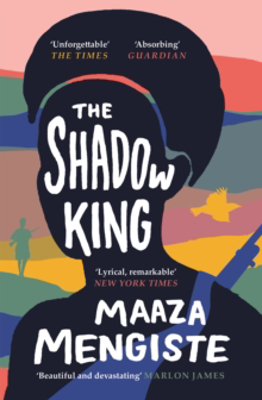
Maaza Mengiste’s second published novel, longlisted for this year’s International Booker Prize.
Maaza Mengiste: When Italy Invaded Ethiopia
Maaza Mengiste discussed her novel with Jess Brough. The Shadow King is historical fiction, centring on the role women played in defending Ethiopia against the invading Italian fascists in 1935. Mengiste discussed her motivation for writing the novel, the research she did and her writing process, among several other topics. Her talk was multi-layered and thought-provoking.
What stood out most to me was her discussion around the voids of history. She discussed how this applied to Ethiopia historically as a nation—the Italian invasion of Ethiopia in 1935 set the stage for World War 2, but this isn’t something many people know about. Mengiste then talked about how the story of the Ethiopian soldiers who fought off the invading fascists has also largely disappeared, and how this battle included Ethiopian women.
Mengiste said it took her ten years to write the novel. One of the reasons for this was because she had to stop at one point and go back to re-research and re-write after she learned from her mother of the role Ethiopian women played in the war, which she was initially unaware of. The other reason was because she felt there were so many stories she needed to listen to in order to write this book.
This was where I felt there was a similarity of process between Maaza Mengiste and Shokoofeh Azar—they both listened to the voices of those who’d gone before them in order to tell a deeper and more honest story. This reminded me of Stephen King’s book On Writing: A Memoir of the Craft, where he talks about opening himself up and simply listening to his characters, rather than trying to control the process.
Maaza Mengiste encouraged attendees to question the voids of history and what may lie there. She illustrated this by discussing the medium of photography and showing several old photographs taken in Ethiopia (photography plays a large part in her novel). In one of the photographs, a white colonialist stands beside an Ethiopian man and the photographer’s shadow is projected onto the image between the two men. She interpreted this image as being about the two white men—the photographer and the colonialist. The Ethiopian man was an accessory. What is his story?
Towards the end of the discussion, Mengiste showed the audience a little piece of laminated paper she’d made for herself many years ago. On it was the phrase: Give yourself space to fail. She said that if you’re not giving yourself space to fail then you’re not really pushing yourself hard enough. I thought this was an inspiring way of looking at life. I may even have to make my own laminated card to set on my desk as a gentle reminder.
I recently started reading The Shadow King and, so far, I’m really enjoying it.
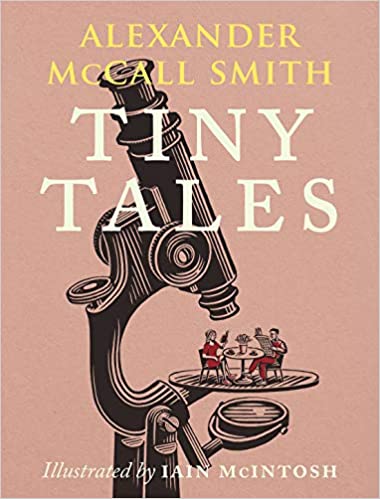
Alexander McCall Smith with Ruth Davidson: For the Love of Humankind
I enjoyed Ruth Davidson’s discussion with Alexander McCall Smith—his infectious optimism and love of humanity shone through. This was especially refreshing given all that has happened in the world these last six months or so. He discussed the settings for his stories and how important a sense of place is to him as a component of story. Not having been outside of my own neighbourhood for months now, his discussion of life in Botswana, Malmӧ and Scotland transported me (setting is such an important aspect of story for me too). He also talked about his creative process—I was amazed to discover he writes effortlessly, and with little rewriting. McCall Smith described this as his having trained his subconscious in such a way that the story just comes. What a wonderful skill to have developed! I look forward to escaping into more of his stories in the future.
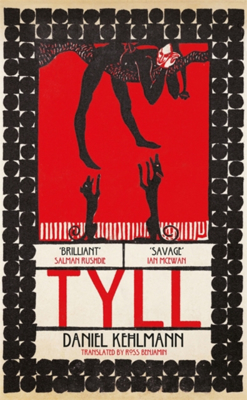
Ross Benjamin & Daniel Kehlmann: When History Prefigures Our Own Times
Ross Benjamin and Daniel Kehlmann were in conversation with Stuart Kelly about Tyll. Daniel Kehlmann discussed his research and the writing of the book while Ross Benjamin spoke of his experience translating the novel.
I expected to enjoy this talk more than I actually did. Perhaps it was the way it was billed—as comparing the pre-Enlightenment era with our own. While there was some discussion of the similarities, I didn’t find the conversation around this to be as deep or engaging as it might have been. But perhaps I just wasn’t in the mood for a deep, political and cultural discussion at the time? In any case, their discussion around how the German translation of the book was carried out was compelling. I didn’t realise how much of an art translation is!
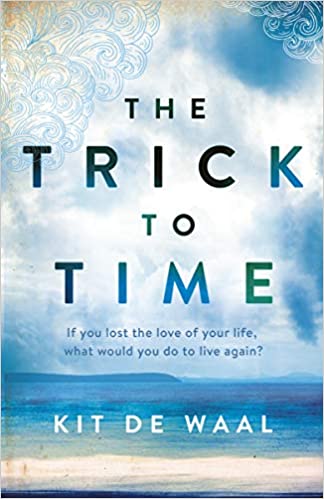
Who’s Afraid of the Working Class? A panel discussion
This was an insightful discussion of working-class art and artists, including writers, and their representation (or lack thereof) in Britain today. The panel featured filmmaker Paul Sng, actor Valerie Edmond, writer Ian Rankin, performer Travis Alabanza and writer Kit de Waal.
One of the points that stood out to me was their discussion around opportunities in the arts. Working-class people start out much farther behind their upper and middle-class counterparts, through no fault of their own. Although the artistic community has recently started to grapple with the inequalities within it, most new entrants to publishing, for example, are white and middle-class. As jobs in the publishing industry are notoriously poorly paid, it’s often only those young people whose parents can afford to continue supporting them who are able to enter the field.
The same applies to other fields in the arts, such as acting. Valerie Edmond spoke of her experience travelling down to London (from Edinburgh) for an interview early in her career, only to be made to wait at length for her interviewers to return from their boozy lunch. By the time they finally returned, hours later, they suggested postponing her interview until the following day. However, Edmonds, being working-class, could neither afford to stay in London overnight, nor did she know where she would go. As her return ticket had already been booked and her bus was due soon, she had to leave and forego the opportunity (which, by this point, she was put off pursuing anyway).
They also spoke about the richness of working-class culture and how neglected its representation is in the British arts.
I very much appreciated this session. I hope it was widely listened to.
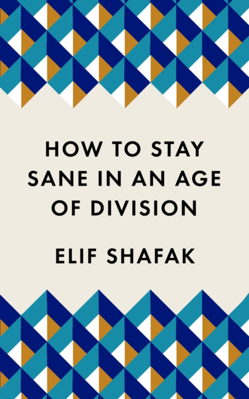
Elif Shafak: Writing the World’s Wrongs
I think what I appreciated most about this talk was Elif Shafak’s candour and her empathetic perspective on recent world events. One of the topics she discussed was the plurality of individuals and humanity. For example, when asked where she’s from, she says she’s from many places as she is of many places, having lived in different cultures and cities all around the world. She noted that even if someone hasn’t lived in other places, they still inhabit many different worlds. Someone can be both a woman and a worker, for example. They may also be LGBTQ. In this way their identity crosses over many different communities. She said that it’s for this reason that she doesn’t like identity politics—it divides us rather than bringing us together. Although I’ve yet to read any of her work, I look forward to doing so.
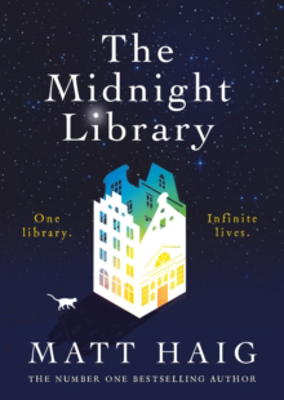
Matt Haig: The Library of Second Chances
Matt Haig discussed his latest novel with Peggy Hughes, Programme Director for Writers’ Centre Norwich.
I’ve read several of Matt Haig’s books and so was very much looking forward to this talk. It didn’t disappoint. Matt Haig discussed the state of the world right now as well as the state of his mind, what it’s like to struggle with depression and anxiety (especially during this pandemic), and, of course, the plot of The Midnight Library.
Rather than recap what the story is about here, I’ll let you read the blurb for yourself:
When Nora Seed finds herself in the Midnight Library, she has a chance to make things right. Up until now, her life has been full of misery and regret. She feels she has let everyone down, including herself. But things are about to change.
The books in the Midnight Library enable Nora to live as if she had done things differently. With the help of an old friend, she can now undo every one of her regrets as she tries to work out her perfect life. But things aren’t always what she imagined they’d be, and soon her choices place the library and herself in extreme danger.
Before time runs out, she must answer the ultimate question: what is the best way to live?
I love the sound of that story and can’t wait to read it.
It was great to be able to attend the Edinburgh Book Festival this year. Who knows, maybe I’ll even make it in person next year.
Did you attend the Edinburgh Book Festival this year? If so, what were the highlights for you?
















